You really can’t last long without a shower!
Outdoor showers consist of three things:
- a water source
- a heater
- (optionally) an enclosure. This element of outdoor showering is covered in the Shower / Privy tent section.
Usually, your water source will be water you’ve brought with you. However, there are some options (such as the Coleman unit) that can draw water from external sources, such as streams or lakes.
Solar showers
Solar showers are left out in the sun to heat up. On a hot, sunny day, the water temperature can become uncomfortably hot within a few hours, so they definitely work! These are the simplest and cheapest shower option.
Some advantages: cheap, simple, they pack small when empty
Disadvantages include less-than-stellar performance when overcast or chilly, and the need for a high place for the bag to get any sort of pressure. With a campervan, though, this usually isn’t an issue. I did find that I needed to extend the hose a bit, so that I could thread the shower nozzle into my shower tent. But I put my shower bags up on the pop-top roof, which is about three feet above the already-tall height of my Ford E-350.
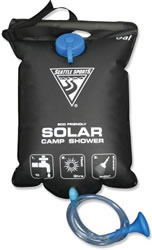
A 5 gallon bag is enough for about 4 showers for myself (or 2 for my wife!). I used to recommend the Seattle Sports brand of shower that REI sold, but it sprang a leak in the back of the van on my last trip, completely soaking the bed. I’ll check the Amazon reviews when I buy my next one.
Propane heaters
Propane heaters work in any temperature, in overcast conditions, at any time of day or night. They heat the water in a matter of minutes, rather than hours.
There are a few types of propane heaters.
Canister, or bug sprayer showers
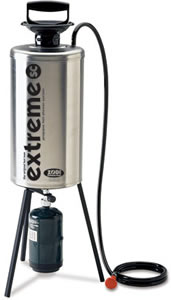 ‘Bug sprayer’ type showers use a metal canister, which can be pressurized by hand, similar to the pesticide sprayers you see in the hardware store. In fact, many people have built their own showers from the metal sprayers in the store, some plastic tube, and a shower wand.
‘Bug sprayer’ type showers use a metal canister, which can be pressurized by hand, similar to the pesticide sprayers you see in the hardware store. In fact, many people have built their own showers from the metal sprayers in the store, some plastic tube, and a shower wand.
For heat, the canisters are placed on a cooktop. Store-bought showers usually come with their own, matched burner – check out the ZODI Extreme, for example (this is the most popular unit of this type amongst expedition campers). These stoves can heat the water to shower temperature in about 5 to 10 minutes.
Disadvantages include a higher price, larger storage requirement, and the need for propane. The propane can be supplied from small screw-on canisters, however, which are available pretty much anywhere.
On-demand units
These units pump water through a heating element, heating the water on its way to the shower wand. They’re usually propane-fired, but electric versions are available.
These have the advantage of being much smaller to pack than the canister showers. You’ll still need to provide a water source, but it can be from your existing tanks, a bucket, or even a lake or stream, if your hose is long enough!
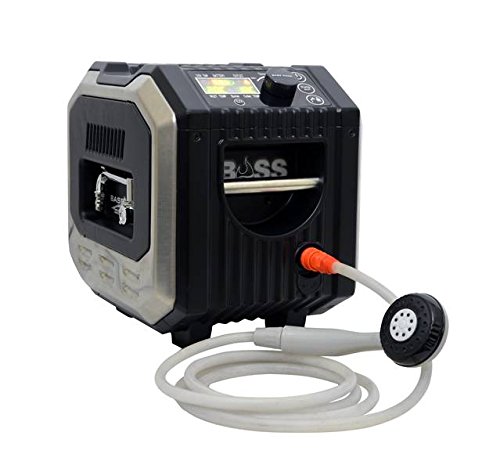 |
There’s also a lower-priced version, the BOSS-XB13, with lower BTUs and flow rate. It only manages to heat the water an extra 35 degrees from its source temperature (the XCW20 manages 45 degrees). If you don’t mind lukewarm showers, you can save some money, but overall build quality seems lower and less reliable. |
 |
|
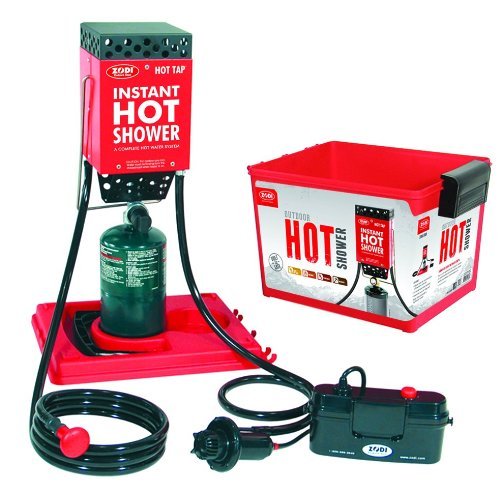 |
Zodi also offers the Hot Tap instant shower. It’s less powerful by far than the Outfitter version, but it’s also a lot more portable, and its carry case doubles as a water reservoir. It runs off of 4 D cell batteries, and can recirculate water through your reservoir to reach scalding temperatures! Water pressure isn’t reported to be excellent, but sufficient for a pleasant shower. |
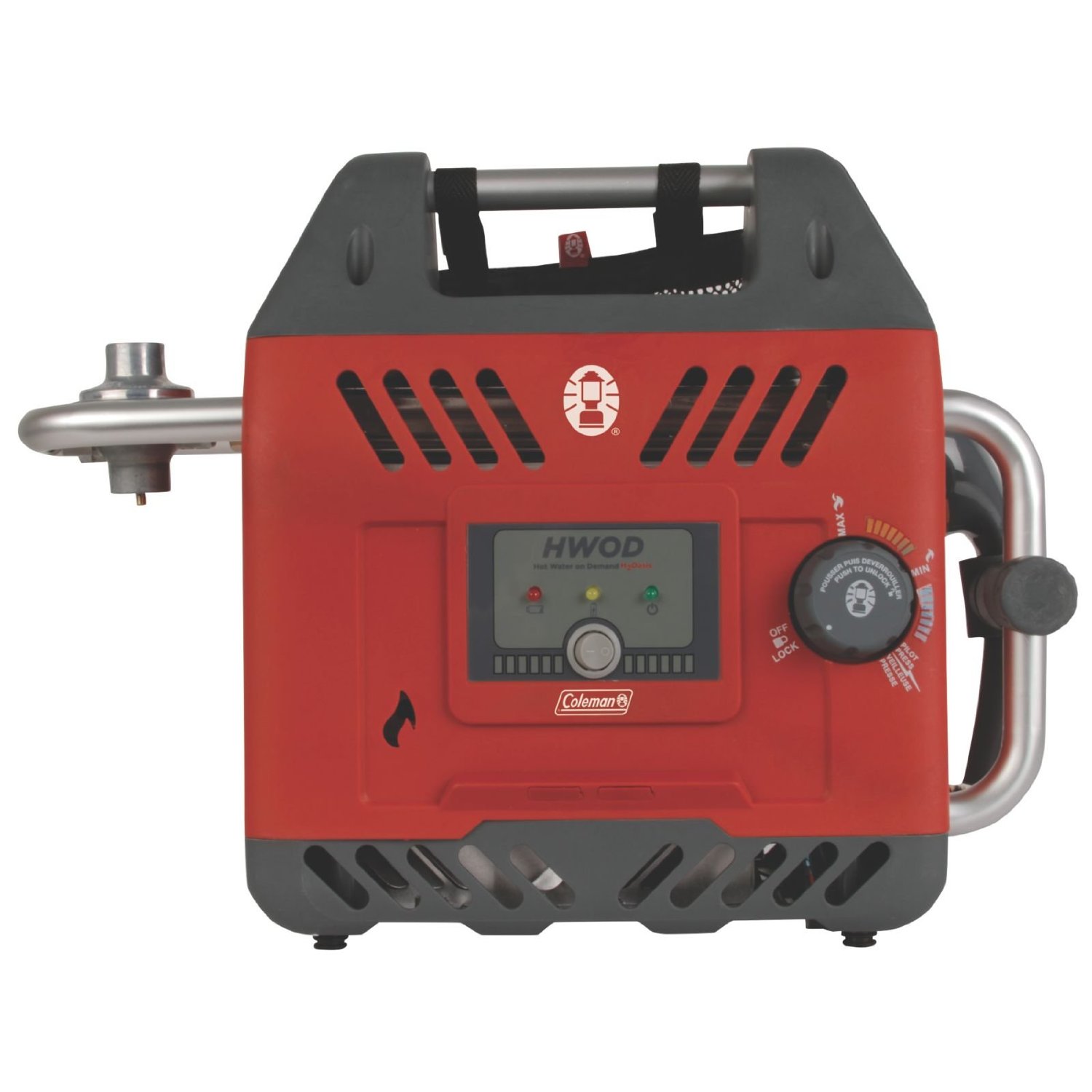 |
Coleman offers the Hot Water-On-Demand Portable Water Heater. Optional accessories include attachments for full-size propane tanks, or to your onboard propane. Some have complained about the built-in rechargeable battery – once its dead, the pump won’t work, and the battery takes about 8 hours to charge. The Zodi is the same (won’t pump without batteries) but takes standard D cells, so it’s possible to bring along some spares. |
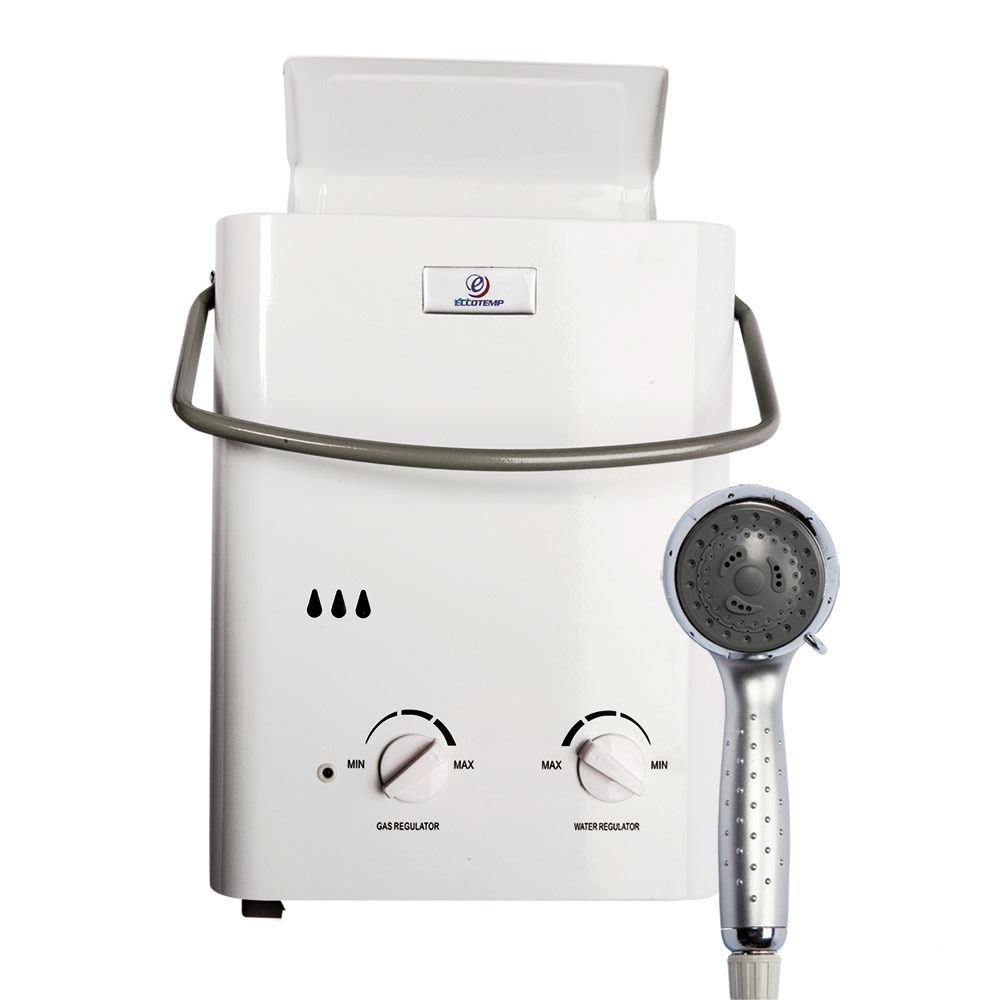 |
Finally, Eccotemp makes the L5, another propane on-demand unit. It gets good reviews on Amazon, and from the camping forums I’ve seen. There’s no built-in pump, like the Coleman has – the L5 connects to a standard hose spigot. So you’ll need a source of pressurized water to use this. There’s a lengthy review of the L5 here. |
Heat exchangers
Also known as flat plate heaters, heat exchangers run your water next to your engine’s coolant, allowing the water to pick up the heat that your engine produces. Flat plates use a series of plates to exchange the heat; wrapped copper piping is another way of accomplishing the exchange.
Heat exchangers generally require the vehicle’s engine to be running, so that coolant is being cycled through the exchanger. Circulation pumps can be plumbed into the coolant system, so that the hot coolant can be circulated without the engine running. Once the coolant has cooled, however, no more heat can be extracted. An Espar coolant heater can heat your coolant to provide hot water at any time.
There are both permanent and removable systems available. The removable ones will still require the installation of quick-release fittings into the coolant system, but the heat exchanger itself won’t need to be mounted in the vehicle.
I’ll write more about heat exchangers soon…
Diesel heaters
The Espar Hydronic system is a diesel-fired coolant heater. Used in conjunction with a heat exchanger, it provides hot water without the need to run the vehicle’s engine.
The diesel heater means that it can be hooked into your vehicle’s tank (if you have a diesel vehicle, obviously) or fueled from a separate tank. This makes it easier to carry extra fuel, as diesel isn’t pressurized like propane, and can be carried in a wider variety of canisters.
More information about these heaters is available from the Espar site.